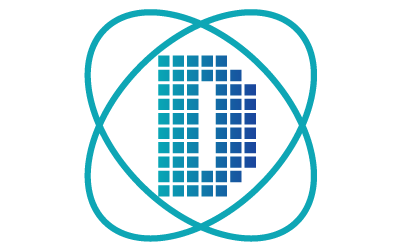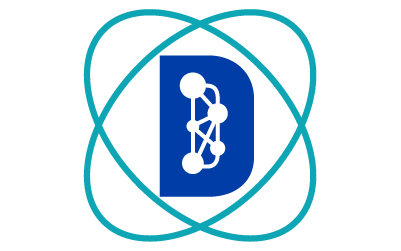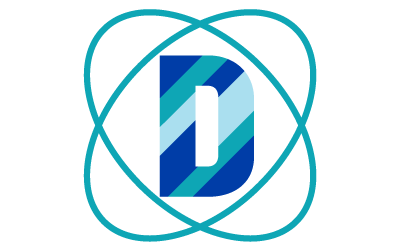
Digitally Enabled
On March 11, 2020, the World Health Organization declared the COVID-19 outbreak a global pandemic. The U.S. declared a national emergency days later. Government agencies shifted from in-person to remote work. Many American corporations had already begun to put similar policies in place. Those that hadn’t quickly followed suit.
There’s discomfort with sudden and large-scale change. However, America’s agility, resilience, and innovation demonstrated during the pandemic offers a glimpse into what’s possible beyond COVID-19. Training resources were deployed to upskill workers. Organizations learned to quickly operationalize forward-looking technology. As the U.S. Air Force’s premier innovation hub put it, their job was to “enable organizations to operate at the speed of the cloud” while ensuring that Defense Department security requirements are met.
But the desire for remote work hasn’t abated even for those that traditionally have been most resistant to the idea like the military and intelligence communities. The Air Force is developing a program called DeviceOne that allows government workers to access classified data while working securely from home. Across the government, including DOD and intelligence agencies, there is widespread interest in more secure remote work due to COVID-19.
One of the best ways to implement remote work is through zero-trust architecture, like that employed by the Air Force platform, which prevents protected information from being stored on a user’s device but allows secure access to information via the cloud, demonstrating that sensitive or even highly classified information can still be securely accessed offsite. This means that government employees can utilize more off-site locations for secure work, and contractors can retain greater flexibility in meeting their clients’ needs.
With such rapid technical innovation occurring, and seeming to accelerate each day, a digitally enabled workforce is a necessity. Ultimately, the most successful organizations will have more than just technical maturity in the future. The best enterprises embrace ongoing transformation—so they are ready to adapt and innovate, without disruption, as conditions change over time. A digitally enabled workforce helps them do just that.

Geographically Distributed
Before the pandemic, the trend toward remote work was driven by opportunity. Now it’s a matter of necessity. A record 59% of federal employees teleworked every day in 2020, up from just 3% before the pandemic. The character of work has changed dramatically in the past 2 years, upending many long-held and ready-to-be-discarded assumptions. Recent events have taught us that the workforce is adaptable, productive, and collaborative in a virtual environment.
A few years ago, the prevailing sentiment considered in-person work to be a requirement. Only in-person work could facilitate the collaboration, team building, and productivity required to succeed. But the status quo proved wrong. Numerous recent studies demonstrate remote work’s ability to reduce fixed infrastructure, office, and travel costs while increasing worker productivity. This, in turn, can lower passthrough costs to clients and customers.
And the cost savings aren’t merely financial. Time is our most precious resource, and the pandemic’s forced move to remote work demonstrates the time savings afforded when you aren’t driving (or flying) to visit the team in Detroit or Dubai. Instead, the distributed workforce can quickly cover hundreds or thousands of miles at the click of a button. All it takes is to select the next virtual meeting link.
A hybrid model mixing remote and in-office work affords employer, employee, and customer the maximum amount of flexibility. Remote work can occur any place in the country with a solid internet connection and zero-trust devices. A geographically distributed workforce is also a competitive strength, providing resiliency for your operations. A power or internet outage in one city—or state, or region—won’t necessarily halt operations.
Another recent trend is that many U.S. workers simply don’t want to go back to the pre-pandemic status quo. More than 4 million people quit their jobs in September 2021, according to the U.S. Department of Labor, the highest quit rate since 2000. Lawrence Katz, an economics professor at Harvard, explained that in many cases workers desire to continue operating remotely but many organizations have failed to adapt.
A recent report by the U.S. Department of Defense’s Defense Innovation Board on the COVID-19 pandemic confirms a similar trend for federal workers, stating that “remote work is not simply a preference but a work style that is highly negotiated with potential employers.” Study co-author Adam Grant, a management professor at the University of Pennsylvania’s Wharton School, recently noted that “flexibility is now the fastest-rising job priority in the U.S.,” a statement that holds equally true for professionals in the national security and intelligence community arenas. Now is the time to rethink how we can attract, recruit, develop, and retain top talent in the industrial base.

Diversity in the Workplace
A diverse workforce brings valuable and unique perspectives, providing richer, more innovative solutions. These employees come from every U.S. state and bring an incredible tapestry of widely varying backgrounds, across a multitude of experiences, ideas, racial, gender, and ethnic underpinnings.
Diverse teams are better equipped to offer unique insights when tackling the toughest challenges, especially at a scale and pace required to serve our government and national security clients. Speaking with CEOs from other industries, they widely agree diversity is no longer an enabler but a necessity in today’s globally competitive and fast-moving environment.
Another plus of diverse teams: They bring incredibly broad networks and resources to bear for mission success. A truly diverse workforce enables a "network of networks" approach. In such a workforce, the answer or resource required to tackle any problem is generally only one phone call—or video conference—away.
Studies from Harvard University show that diverse teams focus more on facts, process those facts more carefully, and are more innovative—all while providing financial returns above the industry average. Collaboration among diverse teams also helps them to acquire new skills and knowledge while centering around a common purpose, a potential game changer in the rapidly advancing and increasingly digital world.
The challenge for most organizations is that diversity improvements can be tedious, incremental, and often imperceptible, especially early in the process. But progress always starts with a first step. Accurately assessing your organization’s current capabilities, establishing a long-term strategy, and planning and implementing near-term actions—while ensuring transparency within your organization—will carry you further and faster when it comes to recruiting, talent retention, and optimal outcomes.
The investment is worth it. A more diverse organization is one positioned to tap the collective ingenuity of its members. Doing so enables an organization to advance business priorities, incorporate best-of-breed ideas, and put forward innovative solutions.
REBUILDING A 3D WORKFORCE

Digital
Developing cutting-edge technology to enable deep, mission expertise.

Distributed
Harnessing the power of the hybrid-cleared workforce, dispersed globally.

Diverse
Reimagining today’s tech workforce to reflect the country we serve.
Building Your 3D Workforce
Effectively embracing new technologies, cultivating an agile 3D workforce, and driving well-informed modernization are essential to meet an increasingly diverse, complex, and competitive international environment.
Huge challenges confront America and American businesses: renewed great power competition, increased global uncertainty, climate change, and constrained budgets. This is all occurring within a background of extraordinary technological change and a necessity to modernize to remain competitive. Looking ahead, this decade will fundamentally change the way the government operates. By 2030, significant portions of the U.S. government will reflect a digital government serving digital citizens to better their digital jobs and lives.
All signs indicate that the future of work is now…and it's 3D—digital, distributed, and diverse.
Be the Future. Work with us.
Explore career opportunities today.



